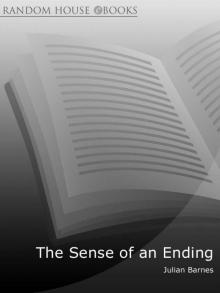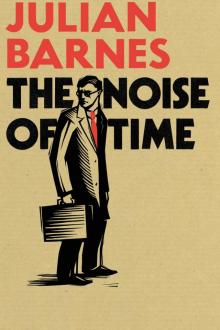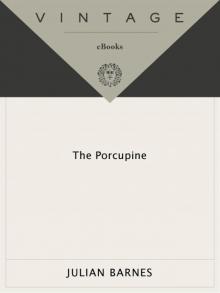- Home
- Julian Barnes
Something to Declare Page 23
Something to Declare Read online
Page 23
Flaubert's failure as a dramatist, understandable enough from reading the actual plays (which are either too literal and novelistic, or else too whimsical), becomes more so, given the condescending attitude to the theatre revealed here. He doesn't enjoy the medium in itself (calling himself “heroic” for seeing two plays in a single week); it is, he decides, a “false” art, in which it is impossible to say anything “complete.” He seems not to understand that “completeness” is different in the theatre—just as the novel, for its part, has its own necessary “falseness.” His way of dealing with theatrical managers was probably misconceived (Sand was characteristically more phlegmatic about the overheated optimism and frequent reversals of this world), although there's no denying his assiduity. In countless letters, he badgers and cajoles, bullies and flatters, while fine-tuning the production of plays we now see as of only moderate merit. This all ought to be fairly boring, except to the theatrical historian; and on the surface it is. But each letter he writes about Bouilhet's plays, crammed with forgettable instructions and proposals, can also be read and felt as an act of love and mourning for his dead friend; also, an act of duty and responsibility towards Bouilhet's adopted son, Philippe Leparfait (who doesn't seem especially appreciative).
This is the advantage of letters over biography: letters exist in real time. We read them at about the speed at which they were written. Biography gives us the crane-shot, the time-elision, the astute selectivity. A biographer might tell you that on the night Flaubert's mother died, 6 April 1872, her son immediately wrote five letters (or five which have survived), two timed “the night of,” one timed at 12:30 a.m. and two timed at 1 a.m. Since they inevitably contain similar information and sentiments, the biographer might reasonably name the recipients and briefly quote. To read them all, however, one after the other, five in a row (plus a sixth dated the following day, and then replies from friends which imply others sent) is to feel more fully the dull repetitiousness of grief and its expression; also, to experience the very time that passes as Flaubert writes.
So letters may draw strength and truth from what elsewhere might prove tedious repetition. Here, in this primary form, we can observe the working out and perfecting of a phrase or idea; we learn to recognize an intellectual or emotional trope, a proof of stubbornness, confirmation of obsession, habit of courtesy. When Flaubert tells George Sand, on 3 June 1874, that he has read her book in one go, like downing “un bon verre de vin,” we note a friendly if possibly evasive compliment; when, in his very next letter, written on the same day, he tells Zola that he has just read his latest novel in one go, downing it like “un bon verre de vin,” we suspect a handy formula.* Repetition implies approval. So, for instance, we can tell how pleased he is with his identification of the three great stages of human development—Paganism, Christianity, Muflisme—by the fact that he parades it four times between 11 March and 20 April 1871. After this six weeks' use, however, he loses interest in the triplet, while keeping Muflisme in his vocabulary, enlarging it fourteen months later into Panmuflisme.
Then there is his chosen self-image as a writer over the period 1871–3. He floats this first to Princesse Mathilde in April 1871. Amid the strife and stupidity of the world, he tells her, he carries on turning out his phrases as before; it is an activity as innocent and useful as that of turning out napkin rings on a lathe. This is a reference back fifteen years to Binet, the tax-collector in Madame Bovary, the drone of whose lathe breaks the village silence on Sundays. (Binet, we recall, works away “with the jealousy of an artist and the egoism of a bourgeois”: a provocative reversal of epithets.) Pleased with this heroically unheroic comparison Flaubert repeats it in September of that year to George Sand, in May 1872 to Edma Roger des Genettes, in January 1873 to Marie Regnier,and finally the next month to Mme Roger des Genettes again. The image drones in his ear as persistently as the lathe; and its domestic nature inclines him (unless there are uses I have missed) to employ it only with female correspondents.
Equally, we can follow the exact construction of a famous declaration (or at least seem to do so: letters are inclined to make us forget that writers also go around talking a lot of the time). Thus in November 1872, Flaubert writes to Turgenev, “I have always tried to live in an ivory tower, but a tide of shit is beating at its walls, threatening to undermine it.” This appears to come, very precisely, from two previous letters. The first to Princesse Mathilde in September 1871, where he says that now, more than ever, he needs to live in an ivory tower above the mire in which humanity paddles; and the second to Caroline in October 1872, where he reports that the spectacle of the Rouen bourgeoisie, combined with his memory of Gautier's artistic sacrifices, makes him feel as if he is drowning in “une marée d'immondices”(a tide of filth). The following month, he combines the two ideas, with the genteeler marée d'immondices giving way to une marée de merde in his letter to Turgenev.
The full, fully expressed, and insistent presence of Flaubert, our closeness to the ground, our closeness to the hand that holds the quill pen (he despised the newfangled steel nib) makes us forget that there might be other views of Flaubert than his own. If diaries often alert us to the fact that they might be written at the same time of day and in the same mood—if they confess their partiality—the normal variety of a correspondence, the stylistic heliotropism as different friends are addressed differently, half-assure us that we have been shown the full extent of the writer's character. So it comes as a genuine narrative shock, after a thousand pages of Flaubert's thrilling intellectual company, to read a ten-page appendix of entries from the Goncourt Journal covering the same period. Flaubert's letters to Edmond de Goncourt have throughout 1869–75 been unanimously bonhomous; while in writing to other correspondents, his only criticism of Goncourt has been an aesthetic one—of his simplistic way with reality. Goncourt's diary entries about Flaubert are relentlessly caustic and patronizing. Flaubert is portrayed as a boastful, vulgar provincial, full of false exaggeration; he claims to be a passionate man, yet women count for little in his life, just as he claims to be a spendthrift, yet sudden fancies make no hole in his pocket; as for his work, it relies on intelligent appropriation rather than any act of originality; he chooses exotic locations, yet exhibits a profoundly conventional view of humanity; and how strange, by the way, that such a famous man should have so few friends. Can this, we wonder, possibly be the fellow whose arm we have linked over so many pages and years? Was he putting it all on? Have we been so blind?
Some part of Goncourt's hostility seems properly attributable to metropolitan snobbery and professional envy; other criticisms are less ignorable. There was a boastful side to Flaubert (Goncourt judged him as much a Gascon as a Norman) and at times a foolish one-upmanship. There may also be some truth in Goncourt's claim that Flaubert had “scorn for the qualities he lacked”; although Flaubert was probably bourgeois enough not to show his tender side in the smoking-room; and this volume is increasingly filled with self-doubt, with envy of the normal, non-artistic life. Arguing with Goncourt is like arguing with any consistent misanthrope or cynic; after a while, their refusal to ascribe virtue becomes corrosive. When Flaubert wrote to Goncourt with morbid openness from Concarneau, he was confident his friend would realize that “This is not a pose!” But Goncourt did think Flaubert was a poseur. “Though perfectly frank by nature,” the Journal records elsewhere, “he is never wholly sincere in what he says he feels or suffers or thinks.”
The antidote to Goncourt's malice is to turn back a few pages and reread the last exchange in this volume between Flaubert and Sand. It is December 1875; both of them have been ill and discouraged; both are slowly getting back to work. Instead of New Year's cards, they exchange their serious, long-meditated, and deeply opposed professions de foi. Flaubert's letter is wise, desolate, and magnificent. It is also a rebuttal which contains not the slightest element of disparagement for the person rebutted. He ends by warmly embracing his “chère bon maître adorable” and expressing the wish tha
t 1876 should be carefree (“léger”) for her and her family.
He still hadn't learnt about dramatic irony; 1876 was the year in which George Sand was to die.
* Ford Madox Ford, writing to Conrad from a military hospital in Rouen in 1916, mentions that he had spotted “the whole monument of Bouilhet thro' the tail of the ambulance that brought me here, in the Rue Thiers.”
* Writers' excuses and evasions usually remain in character. Here is Mallarmé thanking the Irish poet William Bonaparte-Wyse for his latest: “I haven't yet read it, but I've leafed through it and deflowered it by eye. You know the charm and greed the mind feels in wanting to be initiated into a text before reading it. And from several remarkable pages I kidnapped what one might call airy couches, of great intimacy, formed of colour and music which make me dream of water-colours and pianos at the very moment I write to you …”
(15)
The Cost of Conscientious
Literature
Caroline Commanville, Flaubert's niece
These are the leavings of Flaubert's life: six published books (one unfinished); 4,000 or so letters; about 20,000 pages of manuscript; some dud plays; a house which was knocked down shortly after his death; a few paltry possessions (surprisingly few for a writer of his stature); a library, some of which can be seen at the Mairie de Croisset; half a dozen images of him captured by the “untrue” and “mechanical” technique of photography; a body in the Cimetière Monumental at Rouen.
So what he left behind mainly was paper bearing his thoughts; which is as he would have wanted. He despised personal publicity, and scorned those writers who put their photographs on their books. As he wrote to Feydeau in 1859, “I … believe that a writer should leave behind him nothing but his works.” This position derives equally from temperament and from the highest literary ambition. While exhibiting the normal desire for his books to do well and the normal over-sensitivity when critics attacked them, Flaubert never felt that his contract was with his contemporary readers—or at any rate, no more with them than with their descendants. The notion of “contract,” indeed, especially in an economic sense, irritated him. Does the model of the manual worker exchanging services for money extend also to the intellectual worker? Is it a straightforward transaction in which the reader buys the pleasure manufactured by the novelist in his prose? It may seem so to the reader, but Flaubert puts up a “Not for Sale” notice: he writes not for his purchasing coevals but “for all readers in times to come.” He concludes a notebook entry of December 1872 with this denial: “What I produce cannot be consumed and my services are neither to be defined nor bought.”
Has this strategy (or temperamental inclination) worked over the century since his death? Up to a point. Few nineteenth-century writers could have predicted the mania for biography which has overtaken the twentieth century, and how satisfactory a substitute this has proved for the harder task of actually reading the writers being biographed. Flaubert's example of the bootboy and customs officer wanting to know—and perhaps being told—whether or not he plays the harmonica strikes us as a folksy, innocent fear. Nowadays it seems unremarkable that a professor of nineteenth-century French literature at the University of Nantes should publish La Vie érotique de Flaubert, accounting for what he did when and with whom. But on the whole Flaubert has survived better than most the psycho-scrabblings and genial reductivism.
In 1852, when he had written much but published nothing, he told Louise Colet that all he wanted was for his manuscripts to last as long as he did: “It's a pity I'd need too big a tomb, because I'd like to have them buried with me, as a savage is buried with his horse—after all, it's those poor pages which have sustained me while crossing the long plain.” This is no doubt a bit disingenuous in its romantic-valetudinarian tone, and we'd be right to suspect that Flaubert had not abandoned hope of publication; but the manner in which he represents things—the writer, the work, the tomb, eternity—has the arid grandeur which he maintained after he became celebrated. In an update of the burial scenario, revised to account for success, the writer would be now alone in his tomb, his known personality fading into insignificance, with readers no longer caring whether he had a taste for drink or skill with the harmonica; while the work would continue into eternity. “Work,” of course, meant work in its finished, final form, as perfect as Flaubert could make it. This rage to eliminate fault continued long after initial publication: for the 1879 edition of L'Education sentimentale he suppressed 125 examples of mais, thirty-nine alors, thirty-two et, thirty-one puis, twenty-three cependant, and so on.
But posterity can never be relied upon, the concept of “work” changes, as does what is deemed suitable for posthumous publication. Had Flaubert been able to see a hundred years ahead he might well have been tempted to bear away with him to his tomb every manuscript he possessed. First came publication of his letters, then travel diaries, juvenilia, and the first L'Education sentimentale; now—not just to the posthumous astonishment of Flaubert, but no doubt to that of most Flaubertians of the first half-century after his death—we have Pierre-Marc de Biasi's definitive edition of the Carnets de travail. These have been known about, and occasionally raided for some succulent source or quotation, for a while. They have also been raided in a more obvious sense: several of the Notebooks (most notably those covering the period 1851– 9 when Flaubert wrote Madame Bovary and the start of Salammbô) have gone missing, either through covert sale or, more probably, straightforward pilfering.
After Flaubert's death his manuscripts passed to his niece, Caroline Commanville, later Franklin-Grout, who treated them rather as she had treated her uncle in life: with a mixture of affection and greed, loyalty and irritation. She guarded the family name while tidying up all around it, censoring Flaubert's letters for publication and making him as respectable as possible; she tended the flame while discreetly selling off some of the firewood which fuelled it. She is usually cast as a prim semi-vandal who failed to treat her uncle and his leavings with the same tender solicitude which those criticizing her would have done in her place; but both her moral disapproving and her literary ethics were those of her period and milieu. Moreover, if Caroline looked back over her life and in particular at the lost years of a first marriage into which her uncle encouraged her, she would have been unnatural not to feel a grudge. The case for Caroline has not yet been fully made. After his death she made up for the resented extravagance of “The Consumer” by raising money from his manuscripts.
Among the “manuscripts” the Carnets were for many years virtually disregarded. This is partly because of their nature—they consist mainly of travel journals and detailed working notes rather than private diaries (the “private diaries” are his Letters). But they were also disregarded because they didn't really form part of the “work.” There was the book itself, as published and fit for study; before that there was the manuscript, of bibliophilic as much as bibliographical interest; and before that some hazy jottings bearing only curiosity value. So the Carnets were merely part of Caroline's minor literary estate; unnumbered and unidentified, they were included in a previously arranged legacy to the Musée Carnavalet along with the manuscripts of the first and second versions of L'Education sentimentale. However, when Caroline died in 1931, it was found that she had already sold the manuscript of the first Education—the consumer had played supplier once again. The curator of the Carnavalet, piqued by Caroline's behaviour, declined the legacy by refusing to pay the meagre transfer tax that accepting it would have involved. It took five years (in the course of which some of the Carnets disappeared) and a new curator at the Carnavalet before the legacy was accepted. This incident shows not only how undervalued the Carnets were at the mid-point between Flaubert's death and the present (less than undervalued— valued at precisely nothing, not worth having), but also the unpredictable effect of curators on literary legacies.
In 1942 René Dumesnil in his edition of LEducation sentimentale quoted a calepin d'enquête of (?)1865—one that has di
sappeared since he transcribed it. Marie-Jeanne Durry transcribed two and a half Carnets for her Flaubert et ses projets inédits of 1950. In 1973 the Club de L'Honnête Homme edition edited by Maurice Bardèche gave us the first “integral” transcription of the Carnets. It was a well-intentioned project, but ended up as a counter-productive botch. Bardèche managed to turn a patchwork of manuscript into a freely running text, as if the Carnets were some sort of continuous diary; he omitted part of one carnet, and made hundreds of errors of transcription. Flaubert's handwriting is difficult to read, but even so some of the mistakes are impressive. “Fille dupec” (abbreviation for pêcheur) comes out as “Catholique”; “miracles” comes out as “morales”; a piece of furniture “style Louis XVI” followed by two inverted commas is up- or downgraded into a piece of furniture of the invented style Louis XVIII; “telegraphie” becomes the not yet invented “dactylographie”; “Liberté de penser: idem” in the context of Voltaire turns out as “Liberté de penser: indifférent”—a creative misreading. At one point Bardèche even manages to insert the words “foutu embêtement” (bloody nuisance) into a sentence, drawing the words from thin air. Not for nothing does Pierre-Marc de Biasi, in his combative introduction, treat Bardèche as an “anti-model,” a “counter-text.” Perhaps the best that can be said for the CHH edition is that it has spurred Biasi to extra-human assiduousness. Flaubert has in recent decades attracted some extremely good editing (perhaps as a reaction to earlier slop-piness; perhaps also because he is the sort of writer whose presence is broodingly felt when you meddle with his texts). Biasi's edition is dauntingly thorough, meticulous in its transcription of every crossing-out, drawing, squiggle, or unreadable word, brilliantly annotated, and introduced with a mixture of bracing aggression and high common sense. It is a superb edition of what will be (until the unearthing of some surprise cache of letters) the last major piece of Flaubert to be published.*

 The Sense of an Ending
The Sense of an Ending The Noise of Time
The Noise of Time Metroland
Metroland Letters From London
Letters From London Before She Met Me
Before She Met Me Pulse
Pulse Flaubert's Parrot
Flaubert's Parrot England, England
England, England The Porcupine
The Porcupine The Only Story
The Only Story Love, Etc
Love, Etc Through the Window: Seventeen Essays and a Short Story
Through the Window: Seventeen Essays and a Short Story Staring at the Sun
Staring at the Sun Cross Channel
Cross Channel Levels of Life
Levels of Life Arthur & George
Arthur & George Love, Etc.
Love, Etc. A History of the World in 10 1/2 Chapters
A History of the World in 10 1/2 Chapters Something to Declare
Something to Declare Through the Window: Seventeen Essays and a Short Story (Vintage International)
Through the Window: Seventeen Essays and a Short Story (Vintage International)